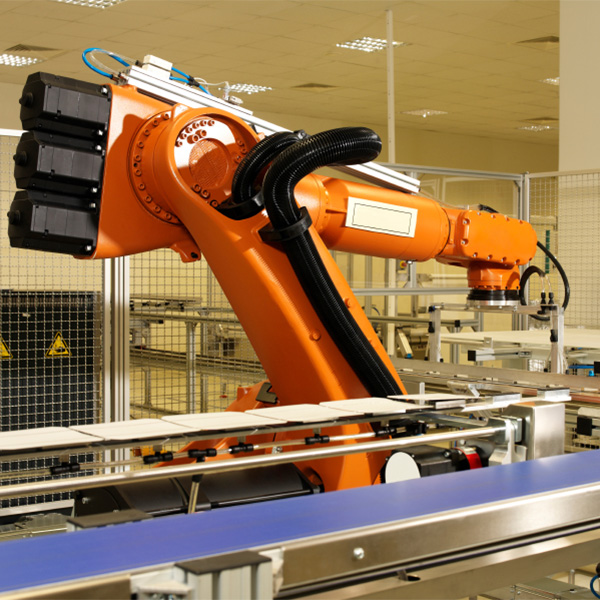Protective Coatings
R&M Sales can guide to in regards to recommending the proper coatings needed to protect your parts from the elements. In addition to our experience in very harsh environments, we can also recommend aesthetically pleasing coatings that can differentiate and set yourselves apart from your competition.
Our protective coating options include:
Anodizing – is an electrochemical passivation process that produces a hard, clear layer of protection on the product’s surface. The part can be left clear or colored with a dye that adheres to the anodized layer’s porous surface and adds additional protection. Colors are standard or customizable. Typically used for aluminum parts requiring minimal wear and corrosion resistance

Autophoretic Coating – is an epoxy-acrylic coating dependent on the product’s ferrous surface to create a chemical reaction in order to achieve deposition. It creates a high gloss, thin, uniform coating that is impact, corrosion and scratch resistant, of all complex areas of a product.
E-Coating – or electrocoating is an epoxy coating process best described a cross between plating and painting. The product is submerged in a water-based solution that contains a paint emulsion. An electric charge is introduced the product causing the paint to adhere to the part (any area the liquid can reach will be covered). It will then be rinsed to remove residual paint, followed by a heated curing process. E-coating is cost effective and provide excellent resistance to chipping and corrosion. Coating thickness is dependent on voltage applied. Available in standard and customizable colors.
Hot Dip Galvanizing – is the process of coating iron or steel by submersing the part in molten zinc. A metallurgical reaction occurs with the iron/steel which creates 3 layers of zinc & iron alloys and a 4th layer of pour zinc. The coating averages 3-5 mils (1 mil = 1/1000”). This process is chosen because of it’s superior protection against corrosion & mechanical damage for up to 25 – 50 years depending on exposure (even to areas with minor damage).
Painting – is also known as dip coating. All areas of the product are covered during a submersion process and then allowed to be air-cured. The process is an economical one resulting in a coating build of 1-2 mils. It provides some corrosion resistance and is available as a primer or for finish coats in standard and customizable colors.
Plastisol – or PVC Plastisol is a vinyl compound that at room temperature is a liquid. After applying to the product, a heating process causes the liquid to solidify and fuse to the part. With a typical thickness range of .005” - .5”, the product has become abrasion, corrosion and electric resistant. It is available in many colors, textures and durability choices.
Porcelain Enamel – is also known as vitreous enamel. A wet enamel mill is sprayed on the product and fused by heating it to 1500° F. During the process an inseparable bond is created that results in a finish that will not flake, rust or peel and superior durability.
Powder Coating – is a process of spraying electrically charged powder particles on the surface of a product that has been electrically grounded. They adhere to the surface until heated and fused in a curing oven that results in a smooth, uniform and durable finish that is both decorative and protective. It provides excellent corrosion resistance. Colors are standard or customizable and available for primers, top-coats, zinc rich, and both low & high temperature needs.
Rust Inhibitors – Can be applied through a topical spray or submersion and create film that resistance corrosion.
Sol-Gel Ceramic Coating – Is the process of converting an inorganic liquid into a gel with a basic composition of silicon and oxygen. The product is sprayed or dipped in the liquid and exposed to a high heat firing process. The end result is a finish that is durable with scratch, abrasion, and corrosion resistance. It is non-stick and food contact compliant. It has a low carbon footprint with zero PTFE or PFOA
Zinc Plating – is the process of applying a thin zinc coating, typically .2 mils thick, to a product that creates a satin to high gloss, esthetically pleasing finish with minimum corrosion resistance. It is available in a clear finish or yellow chromate.

